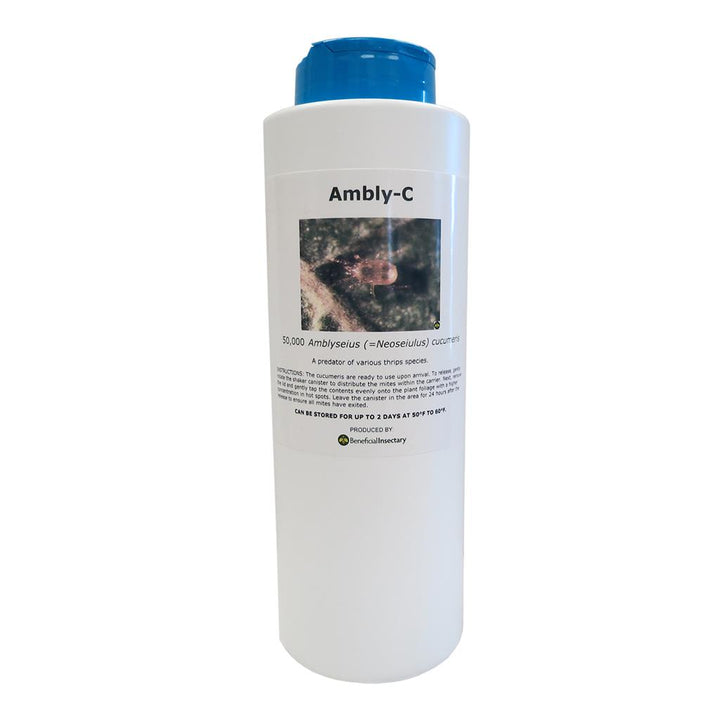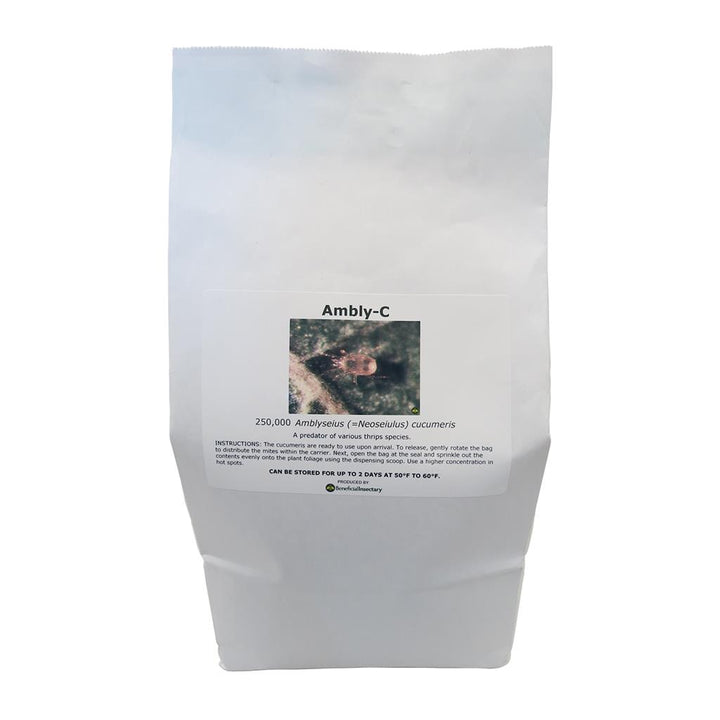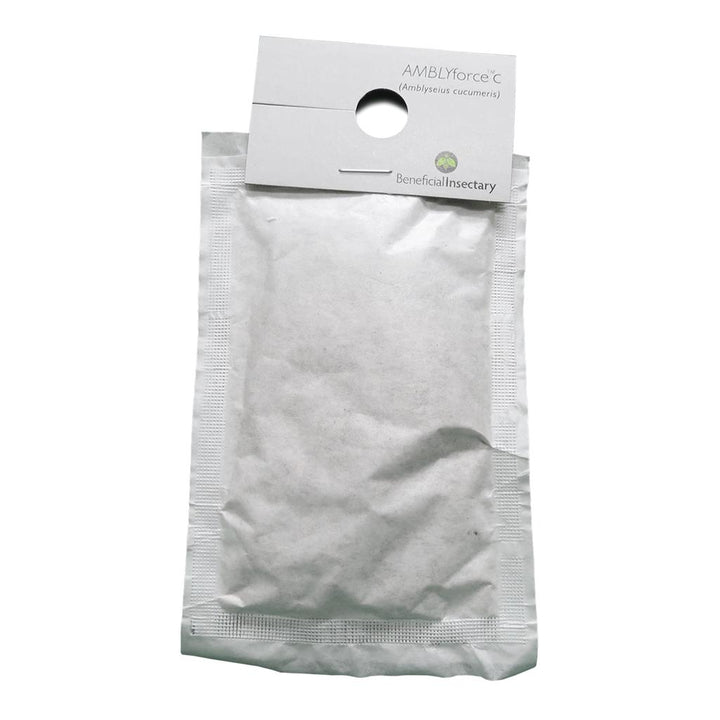Write a review
$75.00
Regular price
/
- In stock - departs in 1-2 business days w/ overnight shipping as weather permits
Amblyseius (=Neoseiulus) cucumeris are primarily used for the prevention and control of various thrips species, as well as broad mites. Only larval thrips can be consumed by cucumeris, though, so this makes them most effective as prevention when thrips levels are still very low. Some of the thrips species they can help control include: Western Flower Thrips (Frankliniella occidentalis), European Flower Thrips (F. intonsa), Onion Thrips (Thrips tabaci), and Chili Thrips (Scirtothrips dorsalis). Note that for all of these species, only the first larval stage (L1) is small enough to be eaten by cucumeris, with the exception of Chili Thrips. They are small enough that both the L1 and L2 stage can be attacked and eaten. Also note that all stages of Echinothrips (Echinothrips americanus) are too large for cucumeris to kill, so other controls will be required. Other pests that can be controlled by cucumeris include Broad Mites (Polyphagotarsenomus latus) and Cyclamen Mites (Phytonemus pallidus).
As with all Amblyseius/Neoseiulus species, other arthropod pests may also be eaten in the absence of their preferred prey, along with pollen from flowering plants. This makes Amblyseius cucumeris an ideal choice for thrips and broad mite prevention. The conditions for optimum performance are between 66 and 80°F with a relative humidity of 65-72%. Note that those are the optimum conditions, and not a prerequisite for a successful program.
Adult cucumeris mites are tiny, only around 0.5 mm. They are tear-shaped, and light beige in color. One female can lay up to 35 eggs in her lifetime, usually on the leaf hairs. The eggs hatch into minuscule 6legged larvae. Soon after emerging, the larvae will molt into an 8-legged nymphal stage, and then ultimately will molt into a reproductive adult. Every active life-stage of cucumeris are predatory. They spend around 10 days in their immature stages, then live around 30 days as adults.
Due to this product being a live good, we do not accept returns on this item.






